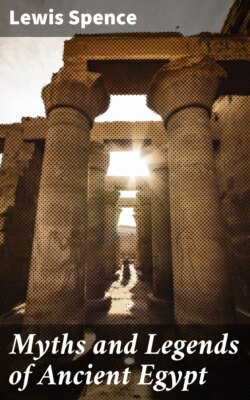Читать книгу Myths and Legends of Ancient Egypt - Lewis Spence - Страница 26
На сайте Литреса книга снята с продажи.
Early Researches
ОглавлениеIn 1821 came the decipherment of the Rosetta Stone by Champollion, and this added a new zest to exploration and collecting. Champollion himself, together with Rosellini, was sent by the Governments of France and Tuscany on an expedition to Egypt, and much was done in copying stelæ and inscriptions. But the Prussian Government initiated a greater undertaking in 1842, under Lepsius, who extended his researches from Egypt into Nubia as far as Khartoum, and again into Syria and Palestine. This expedition, with its scientific methods, yielded a wonderful harvest of valuable results. The official preservation of the ancient monuments and ruins against exploitation by dealers or destruction by vandals was first undertaken by Mehemet Ali, who appointed Mariette to this onerous post, and under his wise and able direction invaluable work was accomplished. This has been developed under the British suzerainty. The ancient sites are claimed by the Government, and the Service of Antiquities has an annual grant of large dimensions and employs many European and native officials. All provinces are included in its survey, and no excavations may take place without its permission; and this is granted to responsible persons only, and on the terms that half of the antiquities discovered shall become the property of the Egyptian Government, the other half going to the finders. Sir Gaston Maspero, director of the Museum at Cairo, has made many brilliant contributions to Egyptian archæology. As early as 1862 the Scottish archæologist, Rhind, saw the necessity for some definite scientific and comprehensive system of excavation if really valuable results were to be obtained, and lamented the lack of any such methods in his time. In 1883 this system of investigation was inaugurated at Tanis under Professor Flinders Petrie. Everything, large and small, found during the excavation of city, temple, or grave is collected and interpreted, and made to yield its quota of evidence and information. This method gives every object its value. Attention is not concentrated on one department alone, hence nothing is wasted or lost, and knowledge of the arts and crafts, the customs, the literature and religion of ancient Egypt is slowly gathered, and all takes its due place in the pageant of history unfolded before us.
Much of the mystery that hung over Egypt has departed, but the glamour and fascination she exerted in the past are still as great as ever. These are not lessened by our more intimate knowledge of her ancient civilization, but rather increased a hundredfold. The silence of centuries has been broken, the hieroglyphs have told their tale to modern man, who listens with ever-deepening interest to the voice of the Past. The drifting sand of the desert has been cleared away and ancient buildings stand again in the sunlight and yield their secrets veiled for so many centuries. The graves tell over again the unchanging sorrow of death and the world-old longings of man. Apart from the literary remains, papyri and inscriptions, the material results have been immense. The ancient topography of the land has become known by the remains of roads, canals, quarries, and mines. The sites of towns, with the temples, fortifications, and private dwellings, have been comprehensively treated, so that the record is almost complete from the building of the foundation to the decorative designs of the artists. The site of each city, again, is generally that of several belonging to different epochs; the ruins of the older buildings were levelled to an even surface and the newer one begun several feet higher. The artificial mounds thus made are sometimes as much as 80 or 90 feet in height. These foundations did not deter the Egyptian architects from erecting lofty buildings, such as those in Memphis, for in several cities walls exist to-day from 30 to 40 feet in height. To support these they were thickened at the base and the floors vaulted. Amongst the limestone remains of houses are often found fragments of sandstone, granite, and alabaster quarried from some ruined temple, which shows that the Egyptians of those far-away days did exactly the same as their descendants, and despoiled the neglected and ruined monuments.
